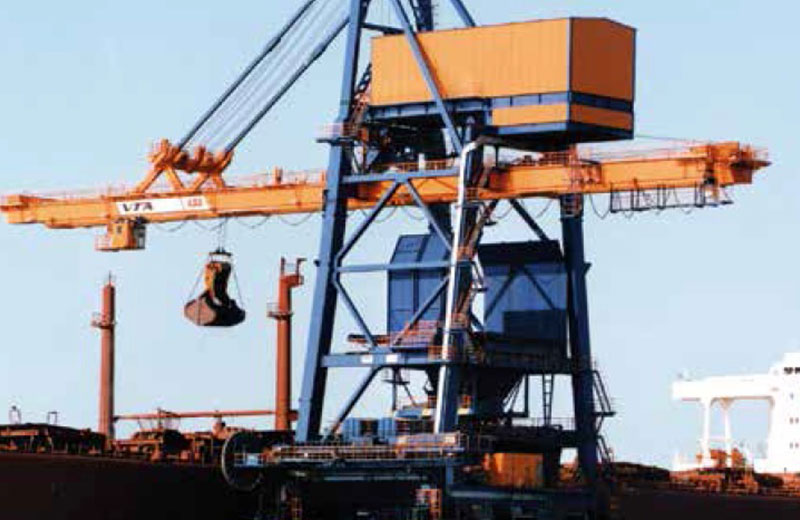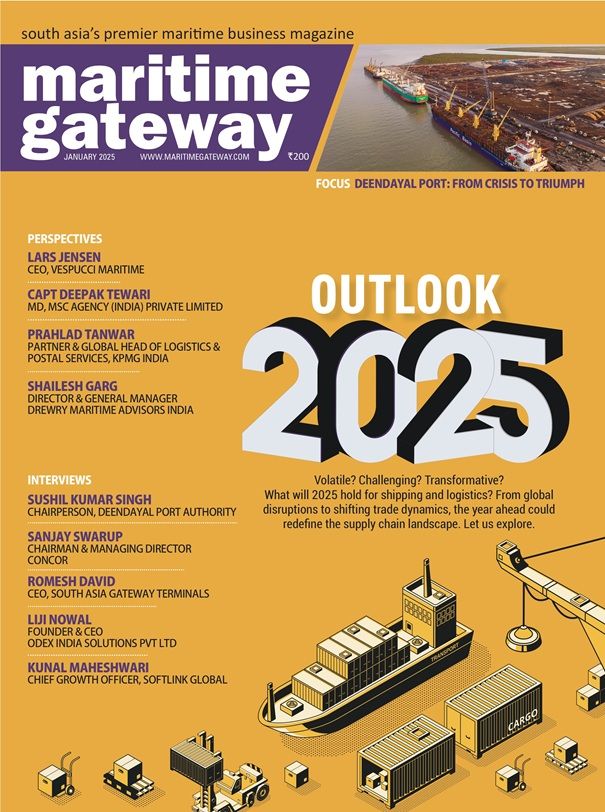[vc_row][vc_column][vc_column_text]
Owing to opposition from stevedores operating at major ports, where this statute alone is applicable, the ministry is understood to have agreed to take a relook at some of the peeves raised by the cargo handlers at ports
The Ministry of Shipping is reconsidering its stevedoring policy after stevedores and shore handlers termed the new rules as exacting and unfavourable for doing business at ports. The normative approach of fixing tariff where the policy arrogates the responsibility of fixing rates to the Tariff Authority is the key disputed point. Two other irritants in the previous policy – auctioning of licenses and revenue sharing system – were done away within the new policy which the ports were asked to enforce from July 31 onwards. However, owing to opposition from stevedores from major ports, where this statute alone is applicable, the ministry is understood to have agreed to take a relook at some of the peeves raised by the cargo handlers at ports. The normative tariff approach has been thumbed down by stevedores as the ports have retained the authority to fix a per-metric-tonne royalty rate from all agents.
This implies the royalty reserve price for different categories of cargo will be set by the ports after the ceiling rate is finalised by the Tariff Authority for Major Ports (TAMP). It is this aspect of fixing a tariff that is objectionable to cargo handlers because the policy does not seem to take into account other factors involved in handling cargo such as equipment required, storage facilities in the port and the complexity in handling cargo. “The current model of determining a tariff is vague and arbitrary now. A fixed rate will not work for all commodities as shore handlers and stevedores handle hundreds of varieties of cargo and it is unfair for he same rate to be applied to all,” a stevedoring agent from Visakhapatnam told MG. KV Krishnakumar, President, Visakhapatnam Stevedores Association says, “Unlike PPP projects for which this policy is not applicable, one type of cargo can be handled and unloaded in multiple ways depending on the equipment brought in and number of people deployed. For example, if we were to handle coal from a conventional berth, the methods of unloading cargo and the output per hour will differ depending on whether or not the vessel is geared, the draft, back up area, capacity of the cranes and quality of grabs to name a few parameters.”
Each of these factors is known to have a bearing on the output and the stevedores allege that these criterion were missed while suggesting fixing of a ceiling tariff. The stevedores maintain that method of fixing a tariff would lead to the absence of a level-playing field between private and state-run terminals and will lead to cargo owners moving to the closest private port. The ceiling rate of handling granite at the Chennai Port for instance is Rs.100 per tonne compared to Rs.20 per tonne in Krishnapatnam Port for a vessel with 1,00,000 tonnes of coal – a metric that would make any cargo owner cringe before choosing to unload his cargo at government ports. “We invest in processes and training and insurance and equipment to offer the best services to our customers. We have very stringent rules governing our operations already. Price discovery is not the only means of regulation,” Ishwar Achanta, Former Trustee, Port of Visakhapatnam, Port of Chennai. The new rules have been criticised also because they aim to penalise the stevedores for not meeting the cargo output levels set by the port. The performance output and cargo efficiency they say hinges not just on the vessels and equipment deployed but also on the labour provided by the port who already work with a particular datum to achieve fixed output on an hourly or daily basis. “The new policy, unfortunately, ensures that not the best service provider, but the cheapest service provider wins. The ceiling tariff could lead the private ports to lower the rates and lead to cargo moving out,” Capt. KN Ramesh, Chief Executive Officer, Port and Road Logistics, SICAL said.
While the new rules assure an increase in revenue for ports through license fee and imposition of penalties, it does not guarantee increase in productivity at ports. These grievances seem to point again that the government should only act as facilitator and not seek a share in the pie by putting its interest above those of its customers and service providers using the facility. “The new policy itself seems like a penalty for functioning in a government port,” says Krishnakumar. Port authorities, however, seem to feel the undercurrent of the new set of guidelines and say they have not implemented the policy in full scale. “We are waiting for further directions from the ministry. It is studying the representations made by the stevedores and guidelines will be finalised in two to three months,” said PL Harnadh, Deputy Chairman, Visakhapatnam Port. Prior to new rules, stevedoring firms used to operate in government owned ports by purchasing a license for a fee ranging between Rs.4,000 to Rs.1 lakh for which they were allowed to operate for a period of three years.
Now, the fee for issue of license shall be on payment of a minimum application fee of Rs.50,000, which may be revised from time to time by the Port Trust Board. After issuing the license, the port earlier had little role in fixing the tariff or interfering with the day to day operations of the stevedores. The exporters and importers used to engage stevedores and shore handlers and all terms of unloading and output were as per the agreement between the two parties depending on whether the berth and vessel were mechanised or not. No fees were paid to the port for these operations.
The trigger for the new rules where ports are asking for a share in handling of cargo seems to emerge from the PPP terminals where the operators pay a royalty or share revenue with the port authorities. “We are at a time when all ports are in the process of modernising all berths. Once modernisation is complete at all ports, coal will only be unloaded using harbor mobile cranes. Also, the plots are being reorganised without much of a difference between them and other commodities. Perhaps then it would be easier to fix a normative tariff and not before that,” Krishnakumar adds. Is there a way out of this situation? Yes, the stevedores offer a solution and say there is a common ground. You take your royalty and allow us to set the rates as this ensures the market forces have a stronger say in rate fixation than whim. This process they say will help in keeping the rates low protecting the interests of the cargo owners.
[/vc_column_text][/vc_column][/vc_row]







